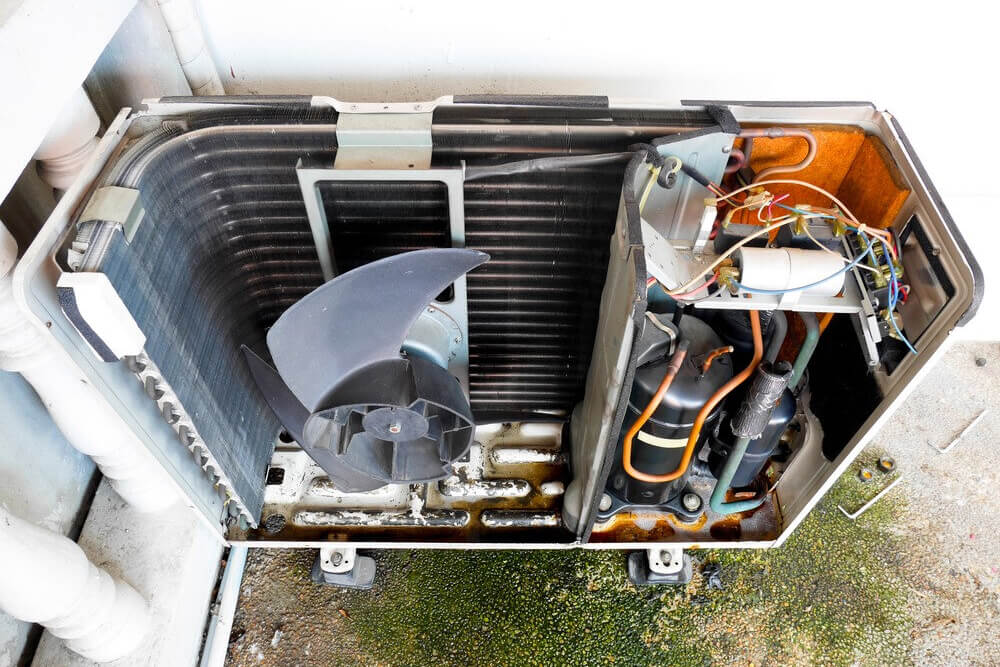
Nowadays, almost everyone's house or room has an air conditioner. Mainly people purchase air conditioners to beat the heat in sunny Singapore.
The air conditioner compressor is considered the heart of air conditioning units. It is because the functioning of the aircon is mainly dependent on the aircon compressor.
Have you ever wondered how an air conditioner compressor works? The air conditioner is an electronic device that helps remove heat from the air inside your home and also sends the heat outdoors. The recirculation of newly cooled air keeps working throughout your house. It is important to learn how the compressor is an essential component inside your air conditioner, including its function and maintenance requirements. The maintenance requirements are necessary to keep the air conditioner working for a long time. Now let's dig into the main parts of the air conditioner.
Mainly the central system part of the air conditioner is made of an evaporator and includes a condenser and a compressor. The air conditioning unit's compressor works as a go-between between the evaporator inserted inside your air conditioner and the condenser. For better Normal Aircon Servicing, you need to hire one of the go-to professional experts to access quality services.
Whenever the air conditioner of your room pulls warm air through the return air vents in the room, then coils found in the evaporator unit absorb the heat. After that, the heat-filled refrigerant is pumped in the direction outward to the condenser unit so that the heat can be quickly released. The refrigerant also travels back to the evaporator, where the system process begins again with the same process. The aircon chemical cleaning price is affordable and makes the services cost-effective.
The compressor, housed inside the condenser unit, is the component that starts the chain reaction and cools the refrigerant. Keeping an eye on the heat's progress toward colder areas is essential. As the air moves through the evaporator unit at room temperature, heat is removed from it. The heat from the air is absorbed by the refrigerant and sent to the compressor.
Refrigerant, a low-pressure gas, leaves the evaporator of an air conditioner. The refrigerant needs to be in a higher temperature and higher pressure form to release the heat it has absorbed. By compressing the molecules of the gas-based refrigerant, the compressor raises its pressure and temperature. The heat trapped in the high-temperature refrigerant is transferred to the colder outside air, which can be released through the condenser because heat flows from hot to cool surfaces.
The refrigerant is compressed, condenses into a liquid, and is then pressure-released. The heat is subsequently distributed by the condenser coils even though the refrigerant is substantially hotter than when it first entered the system. Once the loop is completed, the refrigerant is supplied into the evaporator coils cold. This cycle continues as long as the air conditioner is on. Some HVAC units contain compressors that reverse the process, producing hot air instead of cold air as the output.
It is equally important to learn more about the basic operations related to air conditioning units. An air conditioner can now cool the building, which is possible because it removes the entire heat from the indoor air and transfers it outdoors. A chemical refrigerant found in the air conditioning unit absorbs the unwanted heat and pumps it through the piping system to the outside coil. You will also find a fan in the external unit that helps blow the outside air over the hot coil and transfer the heat from the system to the outdoor.
There are usually five mechanical components found in the air conditioning unit, which include the following:
The thermostat regulates the compressor, the "heart" of the system. The compressor, which also serves as a pump, is in charge of the system's refrigerant flow. Its goal is to compress and pull a low-pressure, low-temperature refrigerant into a gaseous form to increase its pressure and temperature. The condenser coil receives this high-pressure, high-temperature gas after that.
The condenser's coil is mainly the series of piping, which also includes a fan that helps draw outside air across the coil. When the refrigerant allows air passing through the condenser coil, and the cooler outside air passes the coil, then the air quickly helps absorb the heat from the refrigerant, which also causes the refrigerant to condense from the gas into the state of liquid. Usually, high pressure and high temperature are applied to the liquid to reach the expansion valve.
When opening a maintenance or cleaning system, never follow the manufacturer's recommendations. Ensure that you are a qualified and experienced HVAC expert. Due to the risks involved with using water and electricity, we always recommend hiring a skilled repair technician to perform any tune-ups on your air conditioner's refrigeration system.
Only a skilled HVAC service professional should perform tune-ups on the air conditioner's compressor. During an air conditioning supervision visit, our service technicians will check the refrigerant levels to ensure adequate refrigerant is available. The compressor may become overworked if your air conditioner is running with insufficient refrigerant. The compressor could eventually stop working as a result of this pressure.
Knowing how your air conditioner's compressor operates will help you maintain it, so schedule an appointment for air conditioning repair immediately.